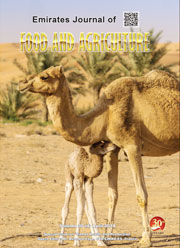CONSUMER PERCEPTION OF BREAD DEPENDING ON WHEAT ORIGIN IN RELATION TO PHYSICOCHEMICAL CHARACTERISTICS OF WHEAT FLOUR
DOI:
https://doi.org/10.9755/ejfa.EJFA-2016-08-1131Keywords:
bread quality, country of origin, purchase intent, wheat flour, willingness to payAbstract
The objective of this study was to investigate the influence of wheat origins on consumer acceptability, purchase intent (PI), and willingness to pay (WTP) of bread in relation to physicochemical characteristics of Korean wheat flour and imported wheat flour. The specific volumes (SV) of bread made with imported wheat flour were correlated with protein (r = 0.893), gluten (r = 0.843), or extensibility (r = 0.879). However, relatively low correlations were found between SV and protein (r = 0.528), gluten (r = 0.459), or extensibility (r = 0.413) in Korean wheat flour. The bread prepared with Korean wheat JK_1, imported wheat NS, and HRW_1 showed higher consumer acceptability, PI, and WTP than others in a blind consumer test. When the origins of the wheat flour were informed to Korean consumers, the WTP for breads prepared with JK_1 was increased significantly, while the overall acceptability was slightly increased for bread made with Korean wheat flour. Overall results of this study showed that Korean consumers exhibited a preference for Korean wheat products and willingness to pay more money than those from the imported wheat despite inconsistencies of wheat quality found in the Korean wheat flours.










 .
. 